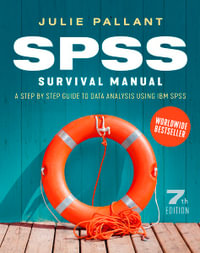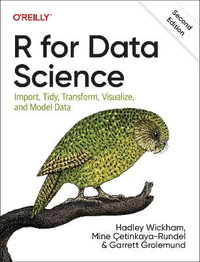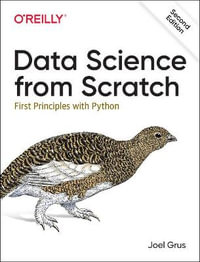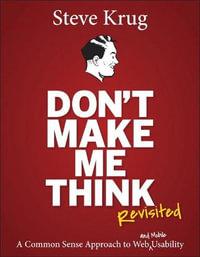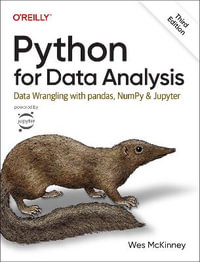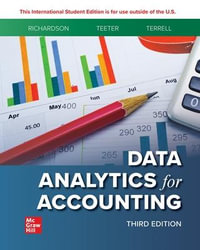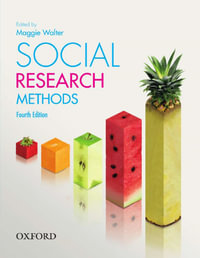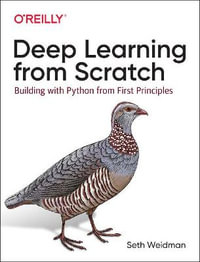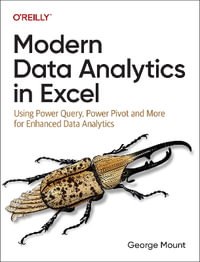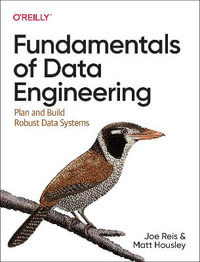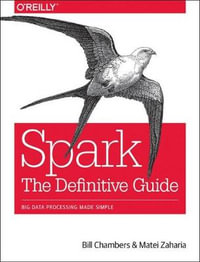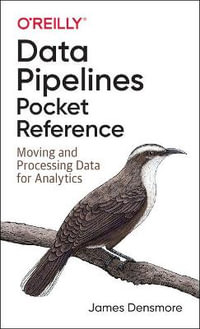
Instant online reading.
Don't wait for delivery!
Go digital and save!
A Computational Approach to Digital Chinese Painting and Calligraphy
By: Songhua Xu, Francis C.M. Lau, Yunhe Pan
Hardcover | 29 January 2009
At a Glance
384 Pages
23.39 x 15.6 x 2.24
Hardcover
$310.47
or 4 interest-free payments of $77.62 with
orAims to ship in 7 to 10 business days
"A Computational Approach to Digital Chinese Painting and Calligraphy" is a technical book on computer science and its applications in the arts. It focuses on Oriental digital arts, in particular Chinese arts and painting, offering a multi-disciplinary treatment from the angles of computer graphics, interactive techniques, human-computer interaction, and artificial intelligence. The book also discusses the unique difficulties and challenges of using the computer to produce Oriental arts, including research results by the authors and their lessons and engineering experiences behind these efforts.
Songhua Xu is a computer scientist of Zhejiang University and Yale University, as well as an honorary researcher of the University of Hong Kong. Francis C.M. Lau is Professor at the University of Hong Kong where he leads the Systems Research Group in the Department of Computer Science. Yunhe Pan is Professor of Computer Science at Zhejiang University as well as Deputy President of Chinese Academy of Engineering.
Industry Reviews
From the reviews:
"This book is quite innovative in its perspective of how the brushstrokes necessary for Chinese calligraphy can be traced in paintings. ... the authors use the enthusiasm for the 2008 Beijing Olympics to encourage spectators to study Chinese arts, too. ... The target audience for this book spans the gamut. ... The authors hope that both the art and science communities will be interested in the book's topics ... . This is one of the important texts in the current literature on these topics." (Minette Carl, ACM Computing Reviews, September, 2009)
| Introduction | |
| Computer Science and Fine Arts | p. 3 |
| Why Use Computers for Arts? | p. 3 |
| Computer as an Art Tool | p. 3 |
| Computer as an Exceptional Art Tool | p. 5 |
| Computers as Mind-talkers | p. 5 |
| Digital Arts | p. 7 |
| What Are Digital Arts? | p. 7 |
| Manual or Automatic Art Creation | p. 7 |
| Three Elements of Digital Arts | p. 8 |
| Classification of the Book Chapters | p. 9 |
| Examples of Digital Arts | p. 9 |
| Digital Film | p. 10 |
| Digital Painting | p. 10 |
| Computer Music | p. 10 |
| Digital Sculpture | p. 11 |
| Computer Dance | p. 12 |
| Computer Puppetry | p. 13 |
| Computer Calligraphy | p. 14 |
| Why Digital Arts Are Computationally Challenging? | p. 15 |
| Lack of Semantic Understanding | p. 15 |
| The Versatile Nature of Art | p. 15 |
| Aesthetic Evaluation and Feedback | p. 16 |
| Inhomogeneity between the Two Types of Intelligence | p. 16 |
| References | p. 17 |
| Computer Science in Painting: A Brief Survey | |
| Computer Science in Paintings or Drawings | p. 23 |
| Introduction | p. 23 |
| Automatic Generation of Paintings and Drawings from Photographs | p. 23 |
| Early Pioneering Work | p. 23 |
| Representative Recent Work | p. 25 |
| Generating Paintings via Human-computer Interaction | p. 29 |
| Automatic Generation of Painterly Rendering Animation from Videos | p. 30 |
| Interactive Generation of Painterly Rendering Images | p. 31 |
| Automatic Generation of Painterly Rendering from 3D Models | p. 32 |
| Automatic Generation of Illustrations and Line Drawings from 3D Models | p. 32 |
| Generating Painterly Rendering Animations from 3D Models | p. 35 |
| Domain Specific Special-purpose Painterly Rendition Generation | p. 36 |
| Efficient Painterly Rendition Generation | p. 39 |
| Special Support for Digital Painting | p. 40 |
| Hardware Support for Digital Painting | p. 40 |
| Multiresolutional Painting | p. 40 |
| References | p. 42 |
| Interactive Digital Painting and Calligraphy | |
| Introduction to Interactive Digital Chinese Painting and Calligraphy | p. 51 |
| Overview | p. 51 |
| Background | p. 51 |
| Previous Work | p. 52 |
| Our Virtual Brush | p. 55 |
| References | p. 56 |
| Basic Algorithmic Framework of a Virtual Hairy Paintbrush System | p. 59 |
| Overview | p. 59 |
| Introduction | p. 59 |
| Overview of E-brush and Related Research | p. 60 |
| Our Work and Contributions | p. 62 |
| Writing Primitives | p. 64 |
| The Model and the States | p. 65 |
| The Parametric Model of the Virtual Hairy Brush | p. 65 |
| The Parametric Model of a Writing Primitive | p. 67 |
| The Three States of a Brush | p. 70 |
| Sampling of the Input Data | p. 72 |
| Dynamic Adjustments of the Brush | p. 75 |
| Estimating the Pysical Conditions of the Brush | p. 75 |
| Dynamic Adjustment of the Middle Control Axis | p. 76 |
| Dynamic Adjustment of the Middle Control Ellipse | p. 78 |
| Dynamic Adjustment of the Tip Control Line | p. 79 |
| Splitting of the Virtual Hairy Brush | p. 80 |
| Ink Flowage between Writing Primitives | p. 80 |
| The Writing Process | p. 81 |
| Customizing the Brush | p. 83 |
| Quality Parameters | p. 83 |
| Configuring the Brush with Machine Intelligence | p. 84 |
| System Implementation and Experiment Results | p. 87 |
| Related Work | p. 89 |
| DAB | p. 90 |
| Virtual Brush by Wong and Ip | p. 93 |
| Other Virtual Brush Models | p. 94 |
| Conclusion and Future Work | p. 94 |
| Summary and Conclusion | p. 94 |
| Future Work | p. 95 |
| References | p. 97 |
| Performance Enhanced Virtual Hairy Paintbrush System | p. 103 |
| Overview | p. 103 |
| Introduction | p. 103 |
| Modeling the Paintbrush's Geometry | p. 105 |
| Three-layer Hierarchical Modeling | p. 106 |
| Real-time Visual Display of the Brush | p. 108 |
| Modeling the Paintbrush's Dynamic Behavior | p. 110 |
| Deformation due to Brush-paper Collision | p. 112 |
| Deformation due to Inner Stress | p. 114 |
| Calibrating the On-line Results | p. 117 |
| E-painting System based on Realistic Virtual Brush Modeling | p. 119 |
| Additional Components of Our New Painting System | p. 119 |
| The Running System | p. 121 |
| Related Work | p. 121 |
| Wong & Ip's System | p. 121 |
| The DAB System | p. 123 |
| Chu & Tai's System | p. 124 |
| Conclusion and Future Work | p. 125 |
| References | p. 126 |
| Pigment Component of an Advanced Virtual Hairy Paintbrush System | p. 129 |
| Overview | p. 129 |
| Introduction | p. 129 |
| Main Ideas | p. 130 |
| Pigment Model and the Brush | p. 131 |
| Organization of the Chapter | p. 132 |
| Previous Work | p. 133 |
| Pigment Behavior Models | p. 133 |
| Comparison with Chu & Tai's Work | p. 134 |
| Pigment Sorption between the Brush and the Paper Surface | p. 135 |
| Pigment Diffusion on the Paper Surface | p. 137 |
| Pigment Diffusion at the Brush Tip | p. 139 |
| Evaporation | p. 141 |
| At the Brush Tip Bundle | p. 141 |
| On the Paper Surface | p. 141 |
| Pigment Deposition on the Paper Fibers | p. 142 |
| Rendering the Simulation Results | p. 143 |
| Pigment Mixing with High Fidelity | p. 143 |
| Superimposing the Layers | p. 147 |
| Hardware-Accelerated Implementation | p. 148 |
| Experiment Results | p. 148 |
| Conclusion and Future Work | p. 153 |
| References | p. 154 |
| Rendering Component of an Advanced Virtual Hairy Paintbrush System | p. 159 |
| Motivation | p. 159 |
| Necessity and Importance of Brush Hair Rendering | p. 159 |
| Performance Requirements | p. 160 |
| Brush Hair versus Human Hair | p. 160 |
| Overview | p. 161 |
| Introduction | p. 161 |
| Ideas and Contributions | p. 161 |
| Organization of the Chapter | p. 162 |
| Related Work | p. 162 |
| Hair Rendering for Quality | p. 162 |
| Hair Rendering for Speed | p. 163 |
| Image-Based Rendering | p. 163 |
| Appearance Modeling | p. 164 |
| Hair Modeling and Representation | p. 165 |
| Modeling Hair as Virtual Material | p. 165 |
| Four-level Hierarchy of Hair Modeling | p. 165 |
| Generalized Disk Structure for Representing Hair Clusters | p. 166 |
| Hair Density Field for Sector | p. 168 |
| HRIR-DB and Semantics-Aware Texture Function | p. 168 |
| SATF and Our Offline/Online Two-phased Rendering Algorithm | p. 168 |
| Minimizing the Size of HRIR-DB | p. 170 |
| Constructing the Database of Hair Rendering Intermediate Results | p. 171 |
| Deriving an HRIR Record | p. 171 |
| Indexing an HRIR Record | p. 172 |
| Fast and High Quality Online Hair Rendering | p. 173 |
| Main Steps of Online Hair Rendering | p. 173 |
| SATF and re- and alpha-map Construction | p. 174 |
| Online Hair Lighting | p. 177 |
| Online Hair Self-shadowing | p. 178 |
| Deriving Shading through Integrating All the Rendering Effects Together | p. 179 |
| Hardware Acceleration | p. 180 |
| Experiment Results | p. 182 |
| Conclusion and Future Work | p. 190 |
| Conclusion | p. 190 |
| Discussion and Future Work | p. 190 |
| References | p. 195 |
| Automatic Generation of Artistic Chinese Calligraphy | |
| Principles of Automatic Generation of Artistic Chinese Calligraphy | p. 203 |
| Overview | p. 203 |
| Introduction | p. 203 |
| Problem Formulation and Overall System Architecture | p. 206 |
| Hierarchical and Parametric Representation | p. 208 |
| Hierarchical Representation | p. 208 |
| Six Levels of Parametric Representation | p. 208 |
| Advantages of Our Representation | p. 210 |
| Calligraphic Shape Decomposition | p. 210 |
| Extracting Levels 0-1 Elements | p. 211 |
| Extracting Levels 2-3 Elements | p. 211 |
| Extracting Level 4 Elements | p. 212 |
| Calligraphic Model Creation from Examples | p. 212 |
| Principles of Calligraphic Model Creation | p. 212 |
| Fusing Knowledge Sources in ARP | p. 213 |
| A Computational Psychology Perspective | p. 214 |
| Generating Artistic Calligraphy | p. 214 |
| Extracting Aesthetic Constraints from Training Examples | p. 214 |
| Past Results Reuse for Efficient Reasoning | p. 215 |
| Experiment Results | p. 216 |
| Possible Applications | p. 220 |
| Conclusion and Future Work | p. 222 |
| Conclusion | p. 222 |
| Future Work | p. 222 |
| References | p. 224 |
| Two Perspectives on Automatic Generation of Artistic Chinese Calligraphy | p. 227 |
| Overview | p. 227 |
| A System Engineering Perspective on Automatic Generation of Artistic Chinese Calligraphy | p. 227 |
| Hierarchical and Parametric Representation | p. 228 |
| Hierarchical Representation | p. 228 |
| Six Levels of Parametric Representation | p. 229 |
| Deriving Parametric Representations for Constructive Elements | p. 230 |
| Facsimiling Existent Calligraphy | p. 233 |
| Extracting Levels 0-1 Elements | p. 233 |
| Extracting Levels 2-3 Elements | p. 234 |
| Extracting Level 4 Elements | p. 235 |
| Generating New Calligraphy | p. 235 |
| Principle of New Calligraphy Generation | p. 235 |
| New Calligraphy Generation System | p. 236 |
| Generating Artistic Calligraphy | p. 240 |
| Constraints on the Process | p. 240 |
| Extracting Aesthetic Constraints from Existent Artwork | p. 240 |
| Constraint Satisfaction for Calligraphy Generation | p. 241 |
| Relaxing the Aesthetic Constraints | p. 242 |
| An Artificial Intelligence's Perspective on Automatic Generation of Artistic Chinese Calligraphy | p. 242 |
| Background | p. 243 |
| The Synthesis Reasoning Model | p. 243 |
| Features of the Model | p. 244 |
| Key Concepts of the Model | p. 244 |
| The Computational Model of Synthesis Reasoning | p. 245 |
| A Generic Methodology to Developing Synthesis Reasoning-based Intelligent Systems | p. 248 |
| References | p. 249 |
| A Preliminary Attempt at Evaluating the Beauty of Chinese Calligraphy | p. 253 |
| Overview | p. 253 |
| Introduction | p. 254 |
| Motivation | p. 254 |
| Chapter Organization | p. 255 |
| Previous Work | p. 256 |
| Calligraphy Representation | p. 257 |
| Extracting Calligraphy Representation through a Two-phased Method | p. 258 |
| Best-effort Automatic Stroke Extraction | p. 258 |
| Intelligent User Interface for the Difficult Cases | p. 265 |
| Calligraphy Aesthetics Evaluation | p. 267 |
| Evaluating Shapes of Individual Strokes | p. 268 |
| Evaluating Spatial Layout of Strokes | p. 271 |
| Evaluating Coherence of Stroke Styles | p. 274 |
| The Overall Evaluation | p. 275 |
| Automatic Generation of Aesthetic Calligraphy | p. 276 |
| Intelligent Calligraphy Tutoring System | p. 278 |
| Conclusion and Future Work | p. 280 |
| Conclusion | p. 280 |
| Discussion and Future Work | p. 281 |
| References | p. 285 |
| Animating Chinese Paintings | |
| Animating Chinese Paintings through Stroke-based Decomposition | p. 289 |
| Overview | p. 289 |
| Introduction | p. 289 |
| Painting Decomposition Approach | p. 292 |
| Image Segmentation | p. 295 |
| Stroke Extraction by Region Merging | p. 295 |
| Stroke Refinement and Appearance Capture | p. 301 |
| Thin Brush Strokes | p. 302 |
| Appearance Capture and Synthesis of Single Brush Strokes | p. 303 |
| Single-stroke Appearance Model | p. 303 |
| Why Direct Texture Mapping is Inadequate | p. 304 |
| Separating Overlapping Brush Strokes | p. 306 |
| Decomposition and Reconstruction Results | p. 309 |
| Animating Paintings | p. 312 |
| Discussion | p. 313 |
| Conclusion and Future Work | p. 319 |
| Conclusion | p. 319 |
| Future Work | p. 319 |
| References | p. 321 |
| Perspectives | |
| Final Fantasies for Digital Painting and Calligraphy | p. 327 |
| Perspectives on Digital Paintbrush Research | p. 327 |
| An Ideal Digital Paintbrush System | p. 327 |
| A Surreal Digital Paintbrush System | p. 331 |
| Perspectives on Intelligent Calligraphy Research | p. 340 |
| An Ideal Intelligent Calligraphy System | p. 340 |
| Intelligent Calligraphy System for Font Applications | p. 342 |
| Intelligent Calligraphy Study for Other Applications | p. 345 |
| An Ideal Painting Animation System | p. 347 |
| References | p. 348 |
| Index | p. 353 |
| Table of Contents provided by Ingram. All Rights Reserved. |
ISBN: 9783540881476
ISBN-10: 3540881476
Series: Advanced Topics in Science and Technology in China
Published: 29th January 2009
Format: Hardcover
Language: English
Number of Pages: 384
Audience: Professional and Scholarly
Publisher: Springer Nature B.V.
Country of Publication: DE
Dimensions (cm): 23.39 x 15.6 x 2.24
Weight (kg): 0.86
Shipping
| Standard Shipping | Express Shipping | |
|---|---|---|
| Metro postcodes: | $9.99 | $14.95 |
| Regional postcodes: | $9.99 | $14.95 |
| Rural postcodes: | $9.99 | $14.95 |
How to return your order
At Booktopia, we offer hassle-free returns in accordance with our returns policy. If you wish to return an item, please get in touch with Booktopia Customer Care.
Additional postage charges may be applicable.
Defective items
If there is a problem with any of the items received for your order then the Booktopia Customer Care team is ready to assist you.
For more info please visit our Help Centre.
You Can Find This Book In
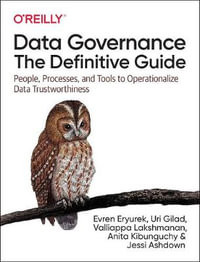
Data Governance: The Definitive Guide
People, Processes, and Tools to Operationalize Data Trustworthiness
Paperback
RRP $152.00
$73.75
OFF
This product is categorised by
- Non-FictionArts & EntertainmentArt FormsNon-Graphic Art FormsDigital, Video & New Media Arts
- Non-FictionArts & EntertainmentHistory of Art & Design StylesArt Styles Not Defined by DateOriental Art
- Non-FictionComputing & I.T.Graphical & Digital Media Applications
- Non-FictionArts & EntertainmentArt Treatments & SubjectsArt Techniques & Principles
- Non-FictionComputing & I.T.Operating Systems
- Non-FictionComputing & I.T.Computer ScienceArtificial Intelligence
- Non-FictionComputing & I.T.DatabasesData Capture & Analysis
